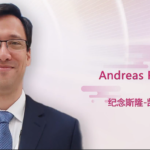
Director of the Harbin Institute of Hematology & Oncology
Editor’s note:
The 28th European Hematology Association (EHA) meeting was held in Frankfurt, Germany from June 8 to June 11, 2023, adopting a hybrid online and offline conference format. As the largest international conference in the European hematology field, the EHA meeting shares topics in various scientific, clinical, and fundamental researches, covering both benign and malignant hematology and discussing the latest advances in hematology. In the treatment of acute lymphoblastic leukemia (ALL), there was significant progress made at this EHA meeting, mainly focused on immunotherapy. To further grasp the content in this area, Oncology Frontier interviewed Professor Ma Jun from the Harbin Institute of Hematology & Oncology and discussed this topic in detail.
Oncology Frontier: Can you briefly outline the current international status of acute lymphoblastic leukemia (ALL) treatment?
Dr. Ma: Based on current international data, the clinical cure rate for pediatric acute lymphoblastic leukemia (ALL) in standard-risk groups has reached about 92%, and the cure rate for high-risk groups has also reached 78%-80%. Thus, pediatric ALL has become a curable malignancy. The clinical cure rate for adolescent ALL standard-risk patients is around 70%, while high-risk adolescent ALL patients require treatment with allogeneic hematopoietic stem cell transplantation (Allo-HSCT). In stark contrast, the treatment of adult ALL is more challenging, especially in older patients. Even though they can achieve a remission rate of over 90%, the long-term survival is dismal. Data shows that the survival period for adult ALL patients after the first relapse is only 3-5 months, and it’s even worse after a second relapse.
Oncology Frontier:What were the focal research directions for ALL treatment presented at this EHA meeting?
Dr. Ma: The treatment of adult acute lymphoblastic leukemia (ALL) has become an important research topic in recent years. At this EHA meeting, the primary research direction for ALL treatment was immunotherapy, including monoclonal antibodies, antibody-drug conjugates (ADC), bispecific antibodies, and cell-based immunotherapies (such as CAR-T therapy). Notably, the bispecific antibody targeting CD19/CD3 (Blinatumomab) can be used for bridge therapy in Ph+ ALL patients with minimal residual disease (MRD) positivity before undergoing Allo-HSCT, showing significant efficacy. In terms of cell-based immunotherapy, CAR-T is increasingly being used for the treatment of relapsed/refractory B-cell acute lymphoblastic leukemia (r/r B-ALL), with notable successes. Indeed, the exploration of ALL treatments was one of the major focuses of the conference, emphasizing standardized, precise, and personalized treatments. For example, for MRD positive ALL patients, CD22 monoclonal antibody can be used as a frontline treatment to clear MRD, aiming for longer survival. Additionally, after CD22 monoclonal antibody treatment, patients can bridge to Allo-HSCT. Research data shows that the success rate for relapsed/refractory ALL patients reaching complete remission (CR) after CD22 monoclonal antibody treatment and bridging to Allo-HSCT exceeds 60%. If used as frontline treatment for MRD clearance, the 3-year progression-free survival (PFS) rate reaches almost 68%-72%. The CD19/CD3 bispecific antibody also shows promising results in MRD clearance and bridging transplantation. However, it’s crucial to be vigilant about therapy-related adverse effects when using CD22 monoclonal and CD19/CD3 bispecific antibodies.
For adult relapsed/refractory B-cell acute lymphoblastic leukemia (r/r B-ALL) treatment, CD19/CD22 bispecific CAR-T has shown significant efficacy, with an objective response rate (ORR) reaching 100% and a combined CR+CRh+CRi rate reaching 88%. This dual-target CAR-T has made significant progress domestically and is moving towards international recognition. It’s promising for r/r B-ALL treatment, rivaling the efficacy of Allo-HSCT, and is anticipated to receive domestic market approval in the future. Overall, the rise of ADC, monoclonal antibodies, bispecific antibodies, and CAR-T therapy is leading the wave of ALL immunotherapies. In treatment selection, CAR-T and Allo-HSCT are primarily curative modalities, while ADC, monoclonal, and bispecific antibodies can enhance the complete remission rate of patients, serving as crucial methods for successful bridge transplantation.
Oncology Frontier: Can you discuss the treatment of T-cell acute lymphoblastic leukemia?
Dr. Ma: T-cell acute lymphoblastic leukemia (T-ALL) has a lower incidence than B-cell ALL, and its therapeutic progress lags behind. In China, for both pediatric and adult patients, there remains a portion with a very low cure rate, only treatable and curable through allogeneic hematopoietic stem cell transplantation (Allo-HSCT). Current research indicates that Nelarabine has shown significant efficacy for T-ALL. Treatment with Nelarabine combined with chemotherapy can achieve a complete remission rate (CR) of over 90% and an 18-month overall survival (OS) rate of up to 62%. Hence, Nelarabine has become a crucial drug for T-cell ALL or T-cell lymphoma, and there’s hope for its approval and introduction in the domestic market soon to improve survival and prognosis for T-cell ALL patients, especially those with relapsed/refractory T-ALL.

Tags: EHA 2023, Interview,ALL



